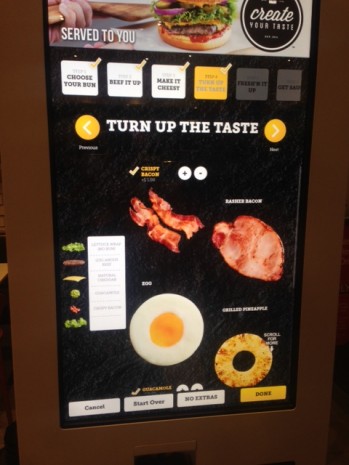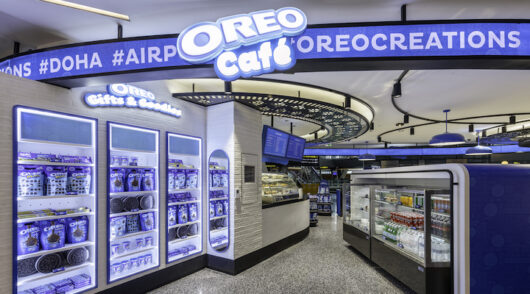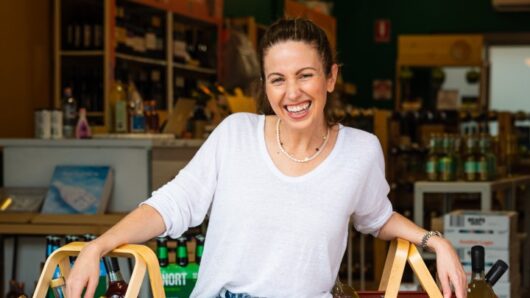“We don’t want to push our ideas on to customers, we simply want to make what they want.” – Laura Ashley, fashion designer
In today’s increasingly fragmented yet hyper-connected society, consumer behaviour can no longer be predicted, and yet all voices still need to be heard. As retailers attempt to be more relevant to their target audiences, and cater to their unique needs, retailers are adapting their service offers and store experience strategies to engage with prosumers.
By encouraging consumers to become the active producers of their own products, opening up the supply chain, brands have the opportunity to still have major impact within their desired audiences, whilst lessening the risk factor. According to Marketingmag.com, “brand conversations with the ‘me-economy’ are the big opportunity.”
This concept has been adopted by many high street retailers, especially in the mid to premium high street sectors, where consumers are willing to pay extra for added value, however this week we take a look at the success of this concept at the lower end of the market, McDonald’s.
According to a report by IBISWorld, McDonald’s remains the biggest player in Australia’s quick-service restaurant sector with a 16 per cent market share of the $14.8 billion fast food industry. Entering the game of enhancing store experience, offering added value and incorporating digital technology into the store offering, McDonald’s have introduced the concept of ‘Create Your Taste’ (CYT) to 750 of their stores.
While it had been reported that McDonald’s were suffering as consumers seek healthier fast food options through boutique burger chains, as well as rising competition from pizza stores, this fast food giant has begun fighting back. Initially by improving the quality of coffee, McDonald’s has attempted to attract back the attention of these consumers, now via the CYT digital screens potentially offering you a fresher and healthier brand experience.
On a recent study visit to the chain, we found the digital kiosks are certainly a fun gadget, and it’s great to feel like you know what ingredients are actually going into your burger (great for those seeking a ‘healthier’ alternative). Whilst restricted to the standard beef patty, all other ingredients are at your disposal as you build a fully personalised and unique burger. The digital screens are bright, the food looks fresh, and it certainly encourages you to forget your preconceived perceptions of McDonald’s. Equally, so does the act of taking a seat once you’ve placed your order, as the burgers are brought to you on a plate (rather than cardboard box) once they are cooked. As you take a seat, the restaurant uses geo-location technology via a unique numbered digital button which acts as a beacon for the floor staff to know exactly where you’re sitting.
On arrival the food looks fresher than the average big Mac in a box; however you are likely to wait up to 10 minutes for this burger. With the average McDonald’s customer seeking their standard Big Mac and fries to go in 2 minutes, whilst it is an example of ‘fit’ retailing in personalisation, it is questionable whether this is the most profitable solution for the chain. On our visit, it was seen that whilst being sat in the McDonald’s near central station for approximately 30-40 minutes, only four people were seen to use the digital kiosks and it was not clear whether this was for the CYT burgers or simply to speed up the ordering process.
The new technology is expected to cost franchisees between $US120,000 and $US160,000 to implement, which is an expensive bet in order to drive sales. There is also the major risk of moving away from the speed of service and unbeatable low price that has made McDonald’s so successful, yet McDonald’s is hoping the pricey kiosks have huge payoffs, as more and more customers are increasingly seeking menu customisation at restaurant and it has the potential to broaden and rejuvenate their market base.
Ultimately McDonald’s seem to have done well to respond to a change in consumer behaviour and utilising the concept of personalisation has allowed them to simultaneously not only change perceptions of the brand experience by transforming the restaurant space into an actual restaurant feel and attract a wider clientele but also increase brand loyalty.
Personalisation drives loyalty due to the customer feeling like they are investing in the brand/product experience, and this consequently can lead to greater user generated content and word of mouth all ultimately enhancing the brand. As retailers strive to adapt in an ever changing retail sector, where consumer behaviour can no longer be predicted, personalisation is a strong strategy that enables you to adapt as consumer behaviour evolves.
Brian Walker is Founder and CEO of Retail Doctor Group and can be contacted on (02) 9460 2882 or brian@retaildoctor.com.au.






